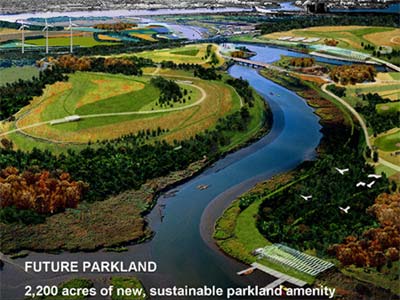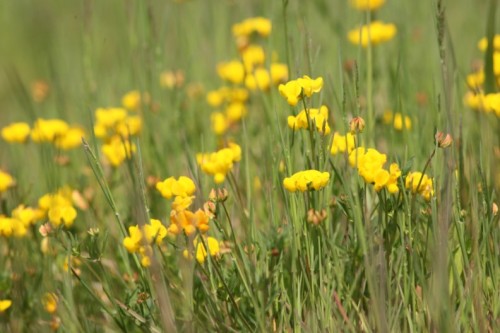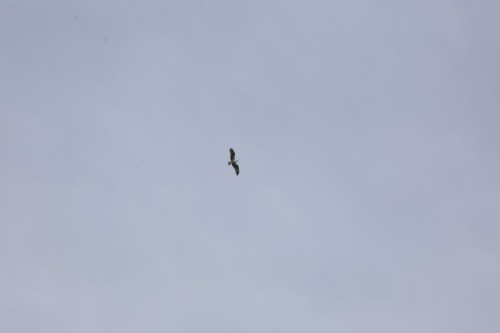by Erik Baard
Not so many years ago, if you told people that you were getting up early on Saturday morning to rush over to Fresh Kills on Staten Island, they would have thought you were crazy or a highly-paid union worker. Today, a few savvy folks might peg you for a naturalist.
The world’s largest dump (actually, the world’s largest manmade structure, of sorts, in that it exceeded the volume of the Great Wall of China) is quietly transforming into the city’s second largest park, after Pelham Bay Park. You can witness the process yourself by signing up for a free tour now through November through this link. Don’t fret the competition to get a ticket – the tour I joined this weekend wasn’t booked up. Besides, you have, oh, a few more years of chances. The park officially opens in 2036.
My friend Emmanuel Fuentebella and I hit the road early, biking from LIC to South Ferry in 35 minutes. At the St. George ferry terminal on Staten Island we were picked up by a mini-bus operated by the NYC Department of Parks and Recreation along with 11 other guests (many of whom were NYC Audubon affiliates and Audubon Society members). Our guide was Christina Somma Berrocal, a NYC Urban Park Ranger. We started learning about the site before we even arrived, as Somma Berrocal pulled out a cardboard cross-section of a trash mound (the site has four large ones, ranging between 140′ and 200′ tall), with a garbage core covered by layers of fresh sand, soil, topsoil and plantings.
Perhaps the most critical component is also the thinnest and toughest, an “impermeable geomembrane.” That rugged black tarp is what stands between 2036’s gorgeous recreation area and wilderness preserve above (in the computer rendering immediately above) and frightening contamination. Tree plantings must be chosen carefully to exclude deep vertical roots systems, Somma Berrocal explained, to avoid any puncture risk.
At the moment the trash is being digested by microbes, which will actually cause the mounds to shrink a bit. But not before they’ve earned their keep! The methane (“natural gas” in daily parlance), organic chemicals, and carbon dioxide produced are tapped via long pipe networks (see the methane taps in the foreground of the above photo by Emmanuel). The natural gas is purified and sold to Keyspan (now part of National Grid), which in turn sells it to heat up to 10,000 homes at a time. I can imagine a “green” dry cleaner using the CO2 to spiff up designer suits for the local gentry.
Less immediately marketable is the leachate goo that landfills produce when water jazzes up microbial and fungal activity. That’s dried and shipped out to another landfill in West Virginia. As a side note, the five boroughs now send trash to Pennsylvania, Virginia, and South Carolina. Remember, the primary insight of environmentalism is that when things are thrown away, there is no “away.”
A few times we caught a whiff of something not-so-fresh at the North Mound of Fresh Kills. “It smells like badly burned bacon,” remarked fellow-traveler Melody. But those moments were truly the exception, and a useful reminder of the admirable audacity of the endeavor.
There’s plenty of encouragement from nature, however. Emmanuel snapped some wonderful photos contrasting the Manhattan skyline with the landscape rolling out from the North and South Mounds. To start, only 45% of the 2,200-acre site was actually used for garbage piles. The rest is composed of wetlands, creeks, and grasslands rich with wildflowers. Black locust and cottonwood trees are shading lowlands.
Before our vehicle even stopped, we saw an enormous turkey vulture aloft over the former wastelands. At the North Mound we were dazzled by the wheeling figures of two osprey silhouetted against a cloud-dappled sky. One of our group, Annie, identified them even at that height by the finger-like feather pattern at their wing tips.
As the trip unfolded there were treated to sightings of egrets, cormorants, an oriole, mallard ducks in a fresh water collect (where I imagine there might also be snapping turtles), and a zigzagging barn swallow. Opal, Meloday’s daughter, explained that the erratic “kamikaze” flight pattern meant it was feeding on insects in flight.
My biggest thrill was spotting a sharp shinned hawk. In truth, I wavered between that identification and calling it a Coopers Hawk and was clueless either way; I was playing the odds. The juveniles of both species look quite similar, being a dab brown, and it was Opal who sorted it out. Adults are easier to distinguish, and some birders call lanky Coopers Hawks “flying crosses” while sharp shinned hawks are “flying mallets.”
Blue herons and killdeer are also reliable finds, Somma Berrocal said. The killdeer often lay eggs on the infrequently traveled gravel paths, because their speckled eggs blend so well, she added.
We didn’t see deer but Somma Berrocal informed that over 200 of the species now on Staten Island. I imagined them sneaking across the Outerbridge Crossing or graceful Bayonne Bridge, but she stunned me by telling us that the deer swam to the island from New Jersey. How brave and hungry must a deer be to stealthily swim tidal waters plied by oil barges?
Curious humans aren’t yet permitted to visit the site by boat, but rowers and paddlers should seek the site’s inclusion in the NYC Water Trail. It would make a wonderful destination, even if for specially arranged tours (as with our landside excursion). And an early dialog might help prevent some well-intention mistakes from being implements, such as the large, artificial launch conceived for Fresh Kills (NYC Parks’ computer generated image below). A soft shoreline, even if created with deposited sand, would be safer, more pleasant, and ecologically friendlier.





